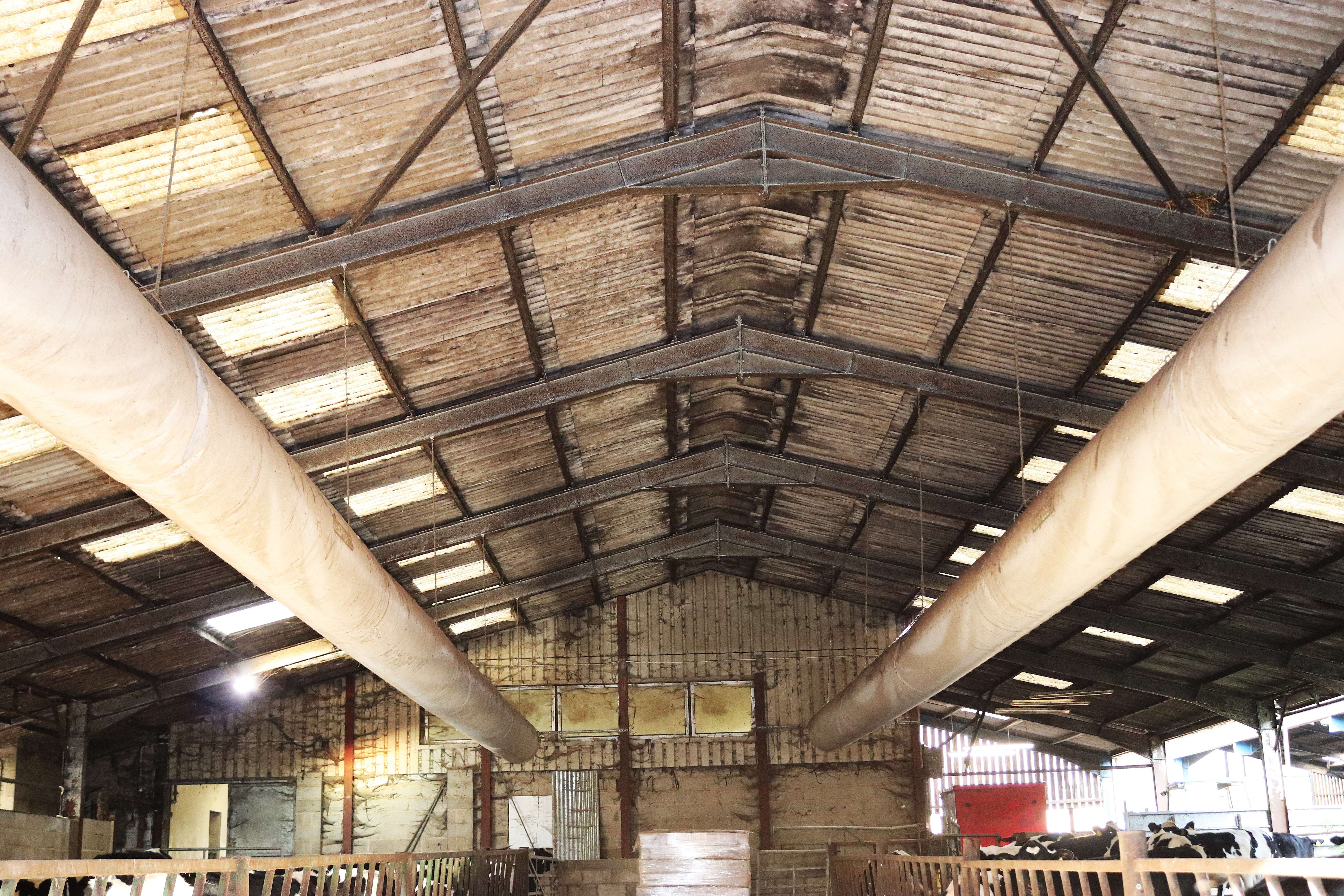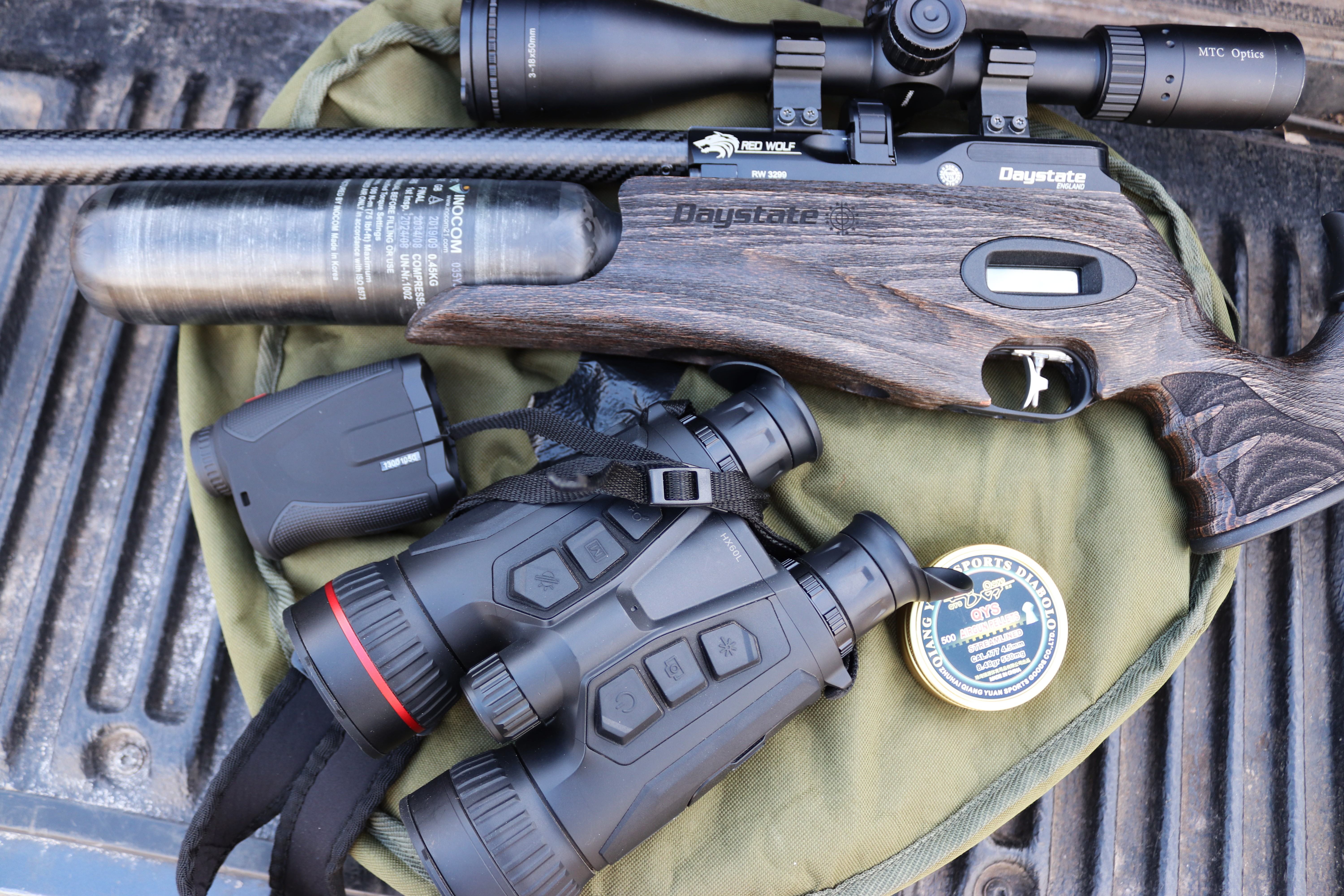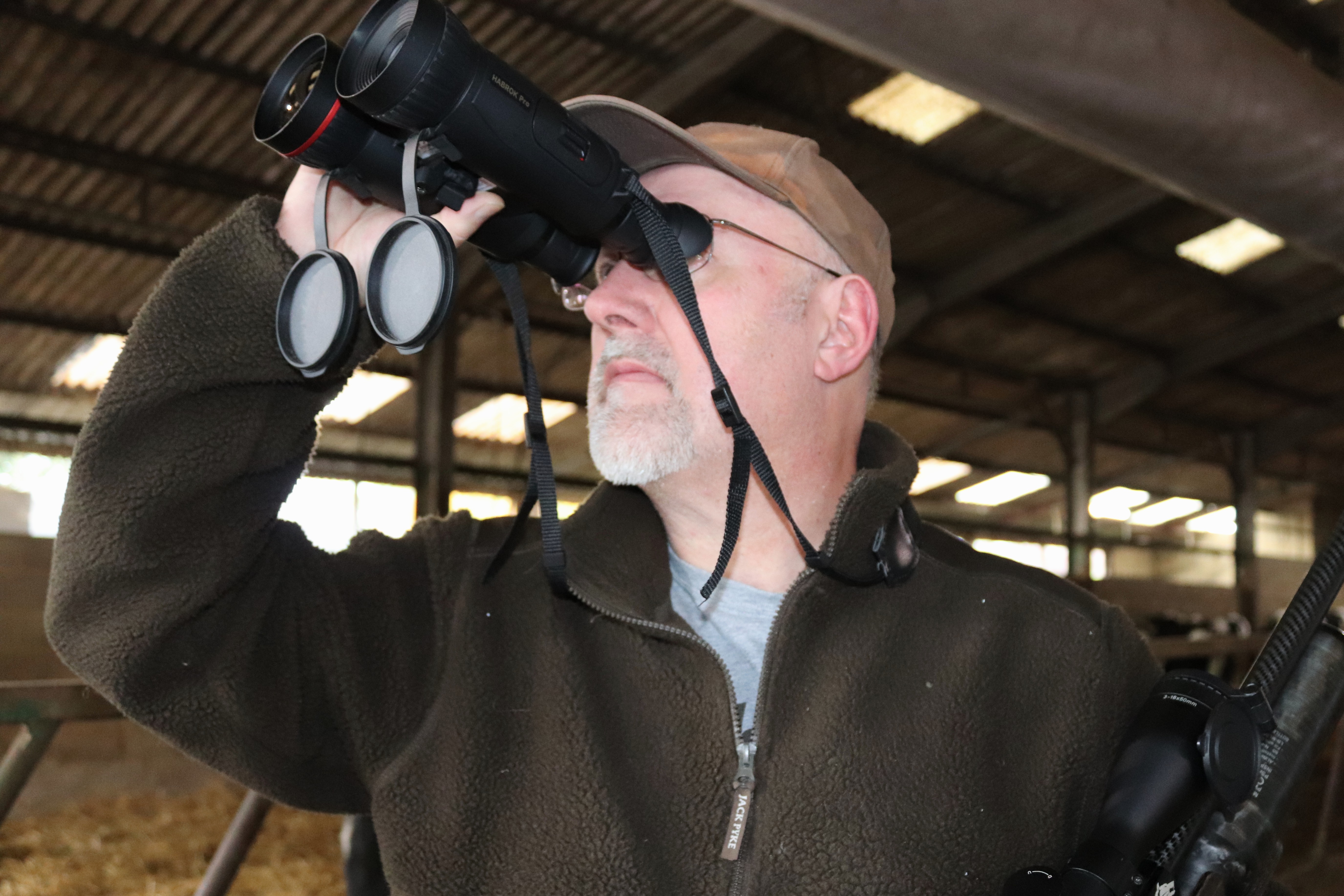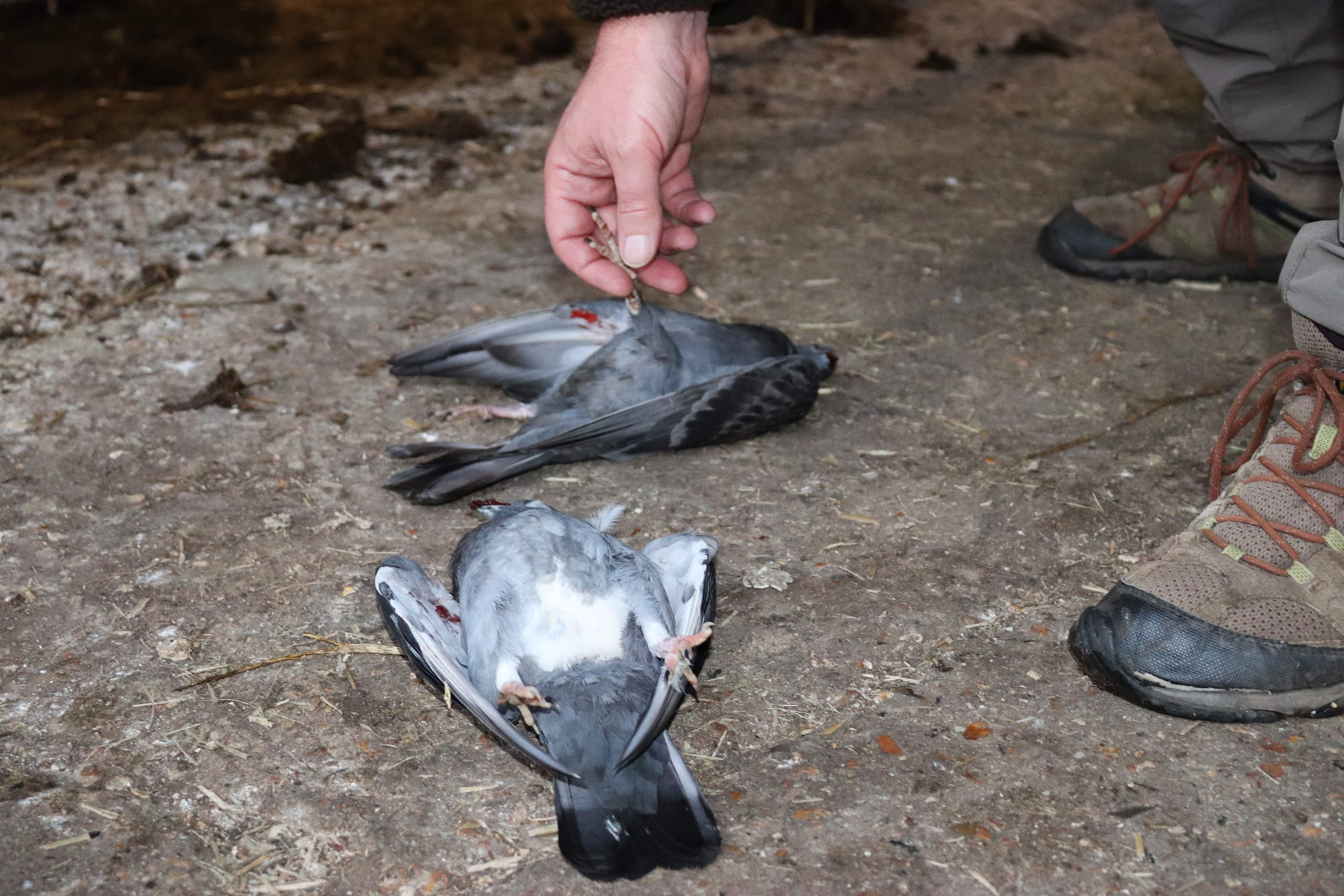
I will readily admit that when it comes to permissions, I am blessed. Truth be told I probably have too many, and getting round them all is a bit of a struggle. I can sense the sympathy coming my way.
But in more than 40 years of shooting, I’ve never had a farmyard permission. All kinds of reasons have got in the way: they’ve either been snaffled up by someone else, the farmer has kids who shoot pests – the list goes on…
I even had one farmer turn me down because the bloke before me had shot one of the cows and that was enough for him to distrust all airgunners. That’s understandable.
It’s not as though there’s a shortage of farms near me. The closest is one I drive past just about every day. Each time, clouds of feral pigeons and corvids mock me as I sit in the traffic. And don’t get me started on the pastures; it’s like Watership Down.
Although it’s fully working with over 400 dairy cows, the farm I’ve bagged belongs to a university which conducts agricultural research and teaches courses there. I’ve been after it as a permission for years, but every call and email has resulted in a polite “no thanks”.
And then, the other morning as I was sat in more traffic, looking at more corvids, feral pigeon and rabbits, it occurred to me that my last attempt was a few years ago so, as soon as I got home, I gave it another try and fired off an email.
You could have knocked me down with a feral pigeon feather when I got a response back less than an hour later thanking me for my email and asking if I could pop down to the farm for a chat.
The next morning, I stood in the yard chatting to the farm manager. He explained that he and his colleagues had discussed pest control at the farm in a meeting the week before, so my email had been perfectly timed. It may have taken a long time, but my first farmyard permission was clearly meant to be.
And what a beauty it is. 186 hectares, the jewel in the crown being the yard itself which is home to seven cow sheds as well as silage and food clamps that are a magnet for just about every winged pest.
The problem, of course, is the poop. The ferals are the biggest problem and their droppings present a health risk to the livestock by infecting their feed and drinking water. And by coating just about everything else, there’s a significant health and slip risk for the workers as well.
Below top: The large barns on Rich's new farmyard shoot are a magnet to winged pests
Below bottom: Dropping from feral pigeons pose a danger to livestock and farmworkers


As a farmyard shooting novice, the first frustration I experienced is the fact that in England it is illegal to shoot feral pigeons with any kind of artificial illumination. You’re allowed in Scotland and Wales. But England? No. If you don’t believe me then ask BASC because I did.
If I could use infrared night vision equipment, I’d like to think I could clear the sheds of dozens, if not scores, of ferals in a single night. As it is, I have to sneak about in daylight with a glass scope when the birds are more wary and do the best I can.
On the plus side, shooting the farmyard is more challenging, as my debut trip proved.
I arrived late afternoon and had the farm to myself with only a couple of dozen cows in one of the sheds and scores of feathered pests to keep me company. Including that initial meeting with the farm manager, it was only the second time I’d set foot in the place, so the first order of business was a quick walk around without my rifle.
As was to be expected, the corvids – mainly jackdaws and crows – spotted me from a distance and took to the air. I made a mental note of where they congregated so I could form a plan to get within shooting distance at a later date. For now, my main concern was the feral pigeons and there were plenty of them.
Some of the birds scarpered as soon as they saw me, racing out of the entrances to the sheds. Others stayed put and were happy to watch me as I walked about. The farm manager had said that someone had shot on the farm a year or two ago and it seemed likely the fliers were those that had been shot at before and the stayers were newer birds that hadn’t.
There are two enormous sheds around 100 metres long and at least 30 metres wide, along with several smaller but still functional sheds dotted around. The roofs on all of them are made from what looks like old asbestos panels. Fortunately, there are plenty of girders to provide safe backdrops, assuming the pigeons cooperate by sitting in them.
Below: Old asbestos roofs meant accurate shot placement was required. Thankfully, thick steel joists provided plenty of safe backstops


Based on my recce, I anticipated most shots being in the 15 to 25 metre range but took my MTC Optics Ballistic Rangefinder with me as estimating distances within the confines of the sheds would be tricky.
My walkabout also made me realise that, despite the bright sunshine outside, the light was murky indoors and I was grateful I’d packed my HikMicro Habrok PRO HX60L thermal binos with me.
Back at the truck I kitted myself out, and having loaded my 12ft/lb .177 Daystate Red Wolf with QYS Streamlined pellets, I wandered to the first of the two large sheds, peering through the Habrok thermal as I approached the main door.
Below: Rich's pro feral shooitng setup included a 12ft/lb .177 Daystate Red Wolf running on QYS Streamlined pellets and paired with a 3-18x50 MTC Viper Pro Tactical scope. He also took along an MTC Rapier Ballistic Rangefinder and set of Hikmicro Habrok thermal binoculars - and was glad he did


Inevitably, several spooked pigeons flew out but plenty more stayed put, including one sat conveniently in the middle of a steel girder. The rangefinder indicated a 20-metre shot and, having discarded the trigger sticks, I leaned against the wall to take the shot.
The murky interior and sunny exterior made locating the pigeon difficult at first and once I had managed to track it through the scope, I had to use the illuminated reticle on my MTC Viper Pro Tactical 3-18x50 to be sure of my shot placement. In the end though, the first feral pigeon hit the ground with a thud and I moved on.
Moving through the shed while scanning with the thermal, I could see plenty more pigeons. Frustratingly though they all sat on top of the girders against the fragile roof and even more fragile skylights.
By the time I’d emerged from the other end of the shed, it dawned on me that dealing with the farm’s feral population was not going to be as easy as I’d first thought.
I gave myself a good telling off for being ungrateful having been presented with such a wonderful permission and carried on, switching tactics to target the birds outside.
Below: Rich's Hikmicro Habrok binoculars proved very useful for spotting feral pigeons in the gloom of the barn


Making my way down the edge of another shed, I peeped around the corner and spotted a grey feral pigeon sat on the top of the roof of an adjoining shed. Safe in the knowledge there was plenty of safe fallout behind, I leaned against the wall and took a heart and lung shot that was rewarded by the sight of the pigeon toppling off the roof.
I was just about to set off to collect it when two more ferals – another grey one and a white and black bird – landed on the same roof. I stayed where I was, recycled the Red Wolf’s sidelever and placed another QYS Streamlined pellet at the point where the wing joined the body. The white pigeon folded its wings and plummeted to the ground.
Collecting the two fallen birds meant a long walk around the largest of the cow sheds. As I made way, I paused every few yards to peer in through the side in the hope of spotting a pigeon against one of the girders. At last, I found one, another white bird, that offered a safe shot.
The rangefinder indicated a distance of 26 metres and, resting the rifle on the concrete side wall, I lined up the shot. It hit the pigeon hard, and it rolled on to its back on the girder, but I could see its head moving. Cranking the sidelever, I placed a second shot into the top of its head to finish the pigeon off.
Below top: Rich takes aim after spotting a feral pigeon that offers a safe shot
Below bottom: The bag begins to build as Rich gets the measure of the avian pests


Over the next hour I picked off several more ferals, mainly from outside of the sheds, but managed a few that sat obligingly on the girders. Eventually it got too dark to see inside with a glass scope and, once again cursing the rules that preclude the use of infrared to shoot feral pigeons, I collected the rest of the fallen pigeons and packed up.
My debut visit was a success with 11 ferals in the bag. As I expected, the corvids were much too clever for me and when I did manage to get close enough for a shot without realising, the birds were too quick for me and took off.
I’ll keep the pressure up on the ferals for now and the next challenge will be to work on a plan to deal with the corvids.
Watch this space!
RIFLE: Daystate Red Wolf (.177 12ft/lb)
SCOPE: MTC Optics Viper Pro Tactical 3-18x50
PELLETS: QYS Streamlined 8.48 grains (.177)
FLEECE: Jack Pyke Sherpa Pullover Fleece
THERMAL: HikMicro Habrok PRO HX60L Multispectral Binoculars
RANGE FINDER: MTC Optics Rapier Ballistic Rangefinder
Article first published 30th October 2025

